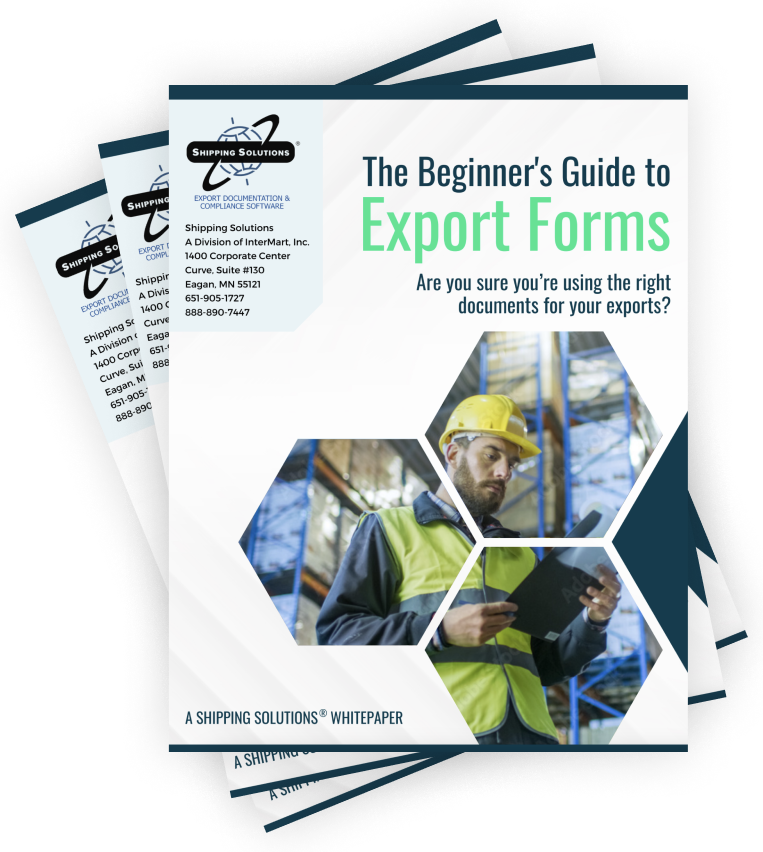The International Trade Blog Import Procedures
Importer Security Filing (ISF): What Is It and Who’s Responsible for Filing
On: February 5, 2025 | By:  Sean Whitworth |
5 min. read
Sean Whitworth |
5 min. read
.webp?width=560&height=409&name=Importer%20Security%20Filing%20(ISF).webp) The Importer Security Filing (ISF) is a Customs and Border Protection (CBP) requirement for ocean cargo imports into the United States. Certain shipment data must be provided in advance of the cargo being loaded on a vessel. It only applies to vessel cargo arriving into the U.S.; it does not apply to air freight or break bulk cargo, explains CBP in this ISF presentation. The information provided helps determine if a shipment is high-risk and can help combat smuggling. Additionally, it contributes to cargo safety and security. It’s often referred to as the 10+2 rule, the reason for which will be explained below.
The Importer Security Filing (ISF) is a Customs and Border Protection (CBP) requirement for ocean cargo imports into the United States. Certain shipment data must be provided in advance of the cargo being loaded on a vessel. It only applies to vessel cargo arriving into the U.S.; it does not apply to air freight or break bulk cargo, explains CBP in this ISF presentation. The information provided helps determine if a shipment is high-risk and can help combat smuggling. Additionally, it contributes to cargo safety and security. It’s often referred to as the 10+2 rule, the reason for which will be explained below.
History of the Importer Security Filing (ISF)
ISF began pursuant to the SAFE Port Act of 2006 and the Trade Act of 2002. However, the ISF rule did not go into effect until January 26, 2009. For the first year the rule was enacted, there was a flexible enforcement period that ended on January 26, 2010. Failure to comply with ISF rules could result in large fines and penalties. CBP may issue liquidated damages of $5,000 per violation for inaccurate, incomplete or untimely filings.
Who’s Responsible for Filing the ISF?
Ultimately, according to the Code of Federal Regulations 19 CFR 149.2(a), the ISF Importer will be responsible for transmission and compliance with the CBP requirements. An ISF Importer is the party causing goods to arrive within the limits of a port in the United States by vessel. Your customs broker can handle the actual filing of the ISF. Many freight forwarders will also have in-house brokers that can clear freight for you and file ISF, provided they have a Power of Attorney (POA) on file for your company. Importers may also self-file, provided they have an account with, and software that can interface with CBP’s Automated Commercial Environment Portal (ACE).
What Information is Required?
There is no special Customs form that must be filed, but the ISF must contain the following information, subject to the timings below:
24 Hours Prior to Goods Being Loaded on the Vessel
- Importer of record number or a Foreign Trade Zone (FTZ) applicant identification number.
- Consignee number.
- Seller (Owner) name/address.
- Buyer (Owner) name/address.
- Manufacturer (Supplier) name/address.
- Ship to party.
- Country of Origin.
- Commodity HTS number, minimum of six digits.
No Later than 24 Hours Prior to Arrival
- Container stuffing location.
- Consolidator (stuffer) name/address.
The above make up the 10 of the 10+2.
The +2
These elements are provided by the ocean carrier, not the importer:
- Vessel stow plan (no later than 48 Hours after departure).
- Container Status Message (CSM) data.
ISF-5
Not all shipments will be required to file the full 10+2 data elements.
These shipments are identified as Freight Remaining on Board (FROB), Immediate Exportations (IEs) or Transportation & Exportations (T&Es). IE and T&E filings are shipments that are to be transported in-bond. An example of this would be a shipment that arrives by ocean in the Houston port, but then once unladen, it is immediately transported by truck to Mexico without entering the commerce of the U.S.
The five required elements are:
- Booking party.
- Foreign port of unlading.
- Place of delivery.
- Ship to party.
- Commodity HTS number, minimum of six digits.

Though the ISF Importer is ultimately responsible, the information can come from various sources. Many times, U.S. importers are relying on vendors overseas to gather information for them, especially regarding the container stuffing location in the case of less-than-container load (LCL) shipments. This information will not be known until the freight forwarder or non-vessel operating common carrier (NVOCC) secures a booking with the ocean carrier and provides that information to the shipper or the importer.
Occasionally the forwarder can be a bottleneck to the process if the information is not provided in a timely manner. A typical ISF form will also include information expected to be filled out by the freight forwarder/broker, such as the vessel name, voyage number, AMS house bill of lading number and master bill of lading number.
ISF is an important step of the customs process in the life cycle of your ocean shipments, and timely filings will help make the import process painless for your organization.
Like what you read? Subscribe today to the International Trade Blog to get the latest news and tips for exporters and importers delivered to your inbox.
This article was first published in May 2023 and has been updated to include current information and formatting.

About the Author: Sean Whitworth
Sean Whitworth is a trusted international trade expert for a number of shippers and manufacturers. He currently works in the 3PL space serving clients in a broad range of industries including energy, automotive glass and plastics, textiles, forestry products and more. He has worked as a consultant for importers/exporters assisting with everything from preparing and packaging goods for international transport, booking with freight forwarders, customs formalities and delivery of goods by land, air and sea.
Sean is currently working to develop his career further in international trade by becoming a Licensed Customs Broker.


